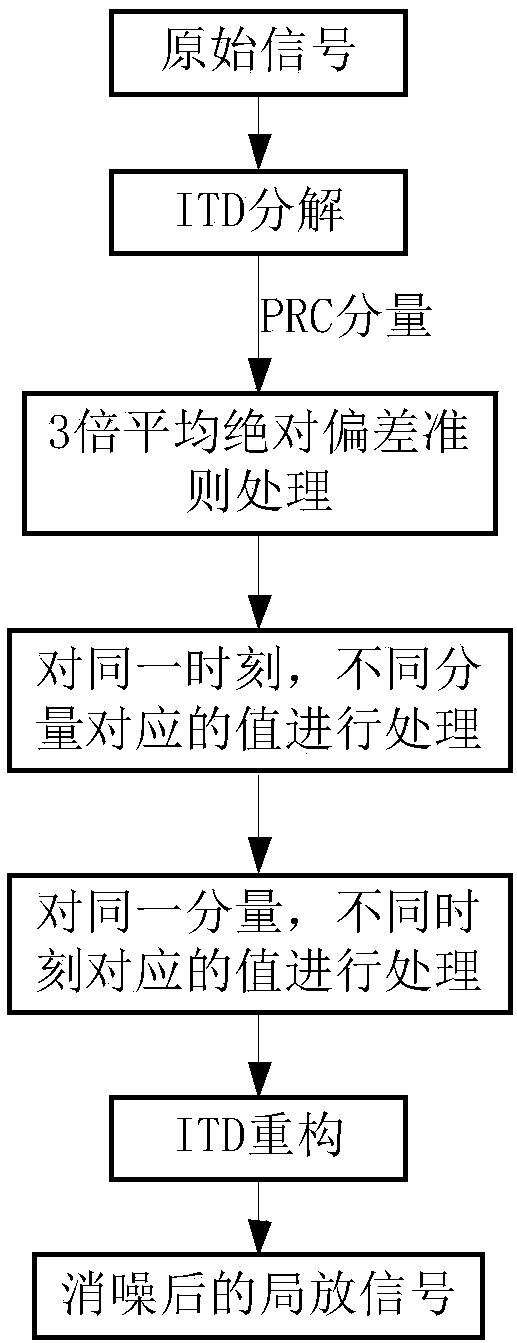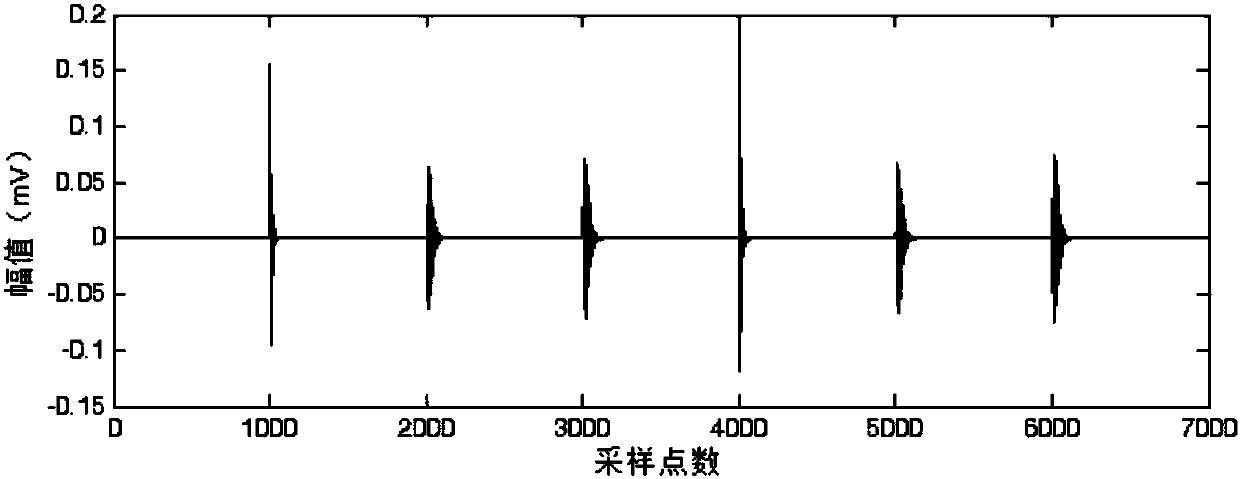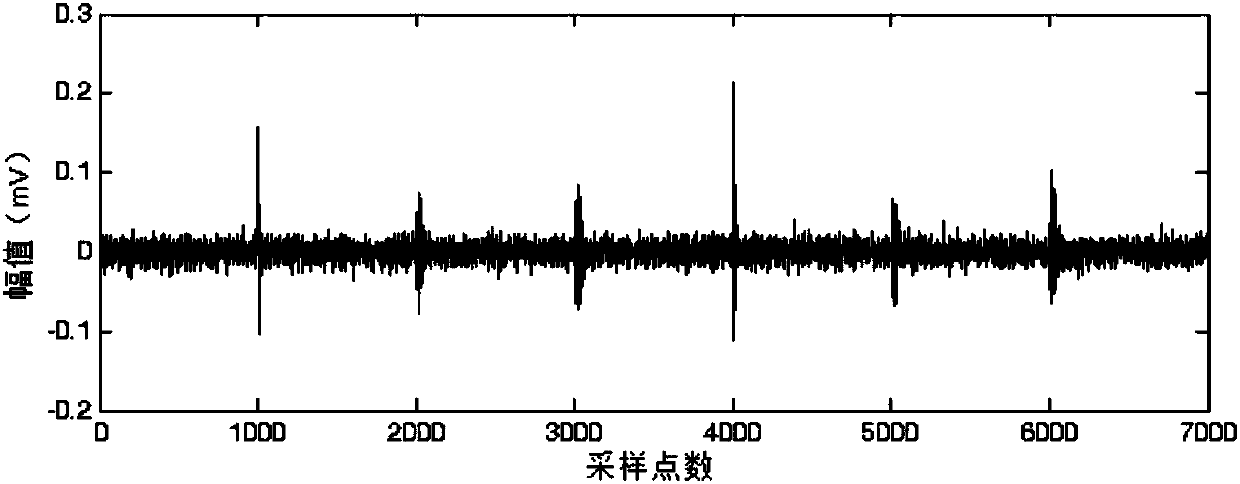Partial discharge denoising method
A partial discharge and partial technology, applied in the field of partial discharge denoising, can solve the problems of endpoint effect and frequency confusion, meet the processing requirements of real-time and continuity, have small edge effect, and improve the effect of signal-to-noise ratio
- Summary
- Abstract
- Description
- Claims
- Application Information
AI Technical Summary
Problems solved by technology
Method used
Image
Examples
Embodiment 1
[0055] Use the partial discharge simulation signal for denoising analysis: the partial discharge signal is generally an oscillation attenuation signal, and the simulation signal can be described by a single exponential attenuation oscillation model and a double exponential attenuation oscillation model.
[0056] Single Exponential Decay Oscillation:
[0057] the s 1 (t) = Ae -t / τ sin2πf c t (4)
[0058] Double Exponential Decay Oscillation:
[0059]
[0060] In the formula: A is the signal amplitude, τ, τ 1 , τ 2 is the attenuation coefficient, f c is the oscillation frequency.
[0061] As shown in Figure 2(a) and Figure 2(b), they are the simulated partial discharge signal and the noised partial discharge signal respectively. During the simulation, the values of each parameter in the single exponential damping oscillation model are: τ=1μs, f c =1MHz, A is 0.2mV, 0.25mV respectively; each parameter value in the double exponential damping oscillation model is: τ ...
Embodiment 2
[0075] Such as Figure 5 , Figure 6 As shown, a certain DC partial discharge test data is selected to test the noise canceling performance of the present invention. The sampling frequency of the test is 1GHz, and the number of sampling points is 1×10 5 from Figure 5 It can be seen that the partial discharge signal contains a lot of background noise. ITD decomposition is performed on the signal to obtain 8 PRC components and a trend margin. Calculate the average absolute deviation value of each PRC component, and extract the partial discharge signals of 8 PRC components according to the set threshold; then process the values corresponding to different components at the same time; The value is processed; it is reconstructed to obtain the denoised waveform as Figure 6 shown. From Figure 6 It can be seen from the figure that the method of the present invention can well remove a large amount of background noise contained in the partial discharge signal.
PUM
 Login to View More
Login to View More Abstract
Description
Claims
Application Information
 Login to View More
Login to View More - R&D
- Intellectual Property
- Life Sciences
- Materials
- Tech Scout
- Unparalleled Data Quality
- Higher Quality Content
- 60% Fewer Hallucinations
Browse by: Latest US Patents, China's latest patents, Technical Efficacy Thesaurus, Application Domain, Technology Topic, Popular Technical Reports.
© 2025 PatSnap. All rights reserved.Legal|Privacy policy|Modern Slavery Act Transparency Statement|Sitemap|About US| Contact US: help@patsnap.com



